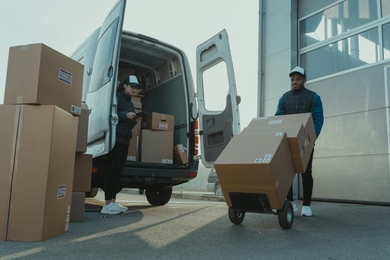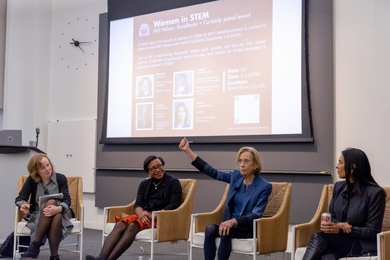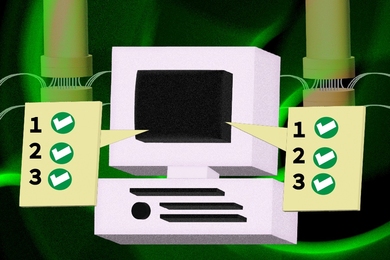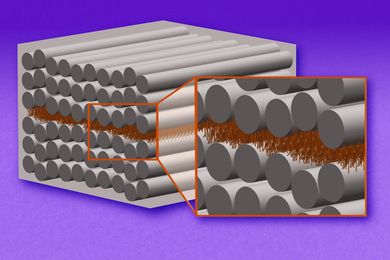IT Energy@MIT table
One highlight of MIT Earth Week 2007 is the Earth Day Fair on April 26, from 10 a.m. to 3 p.m. in the Stata Center. If you come, be sure to stop by the IT energy table. IS&T staff will have a demonstration of energy use by computers and monitors. You can also introduce yourself to MIT's new IT energy coordinator, Laxmi Rao. As head of the IT Energy@MIT initiative--part of the campus energy task force--she is eager to share ideas on how to reduce the IT energy footprint at MIT, including insights gleaned from courses and research. You can also send feedback to it-energy@mit.edu.
If you can't make it to the IT energy table, visit the initiative's web page at web.mit.edu/ist/ services/it-energy.
Designing interactions
Digital technology has changed the way we interact with everything from the games we play to the tools we use at work. In "Designing Interactions," from the MIT Press, author Bill Moggridge introduces us to 40 influential designers who have shaped our interaction with technology. Moggridge, designer of the first laptop computer (the GRiD Compass, 1981) and a founder of the design firm IDEO, tells these stories from an industry insider's viewpoint, tracing the evolution of ideas from inspiration to outcome. Among the innovators he interviews are Will Wright, creator of The Sims; Larry Page and Sergey Brin, the founders of Google; Doug Engelbart, Bill Atkinson and others involved in the invention and development of the mouse and the desktop; and MIT professors Hiroshi Ishii and John Maeda.
"Designing Interactions" is illustrated with more than 700 images and accompanied by a DVD with segments from all the interviews. You can also browse by chapter and view segments from the DVD at designinginteractions.com.
Expanded access to historic e-journals
The MIT Libraries recently acquired electronic access to earlier issues of journals in fields of interest across MIT. Researchers can now link to and read journal citations going back many decades without leaving their offices or labs. The expanded access includes important collections in the life sciences, neuroscience, engineering, mathematics, chemistry, economics, physics, and art and architecture, as well as major national newspapers back to the 19th century. The Libraries also plan to add historic e-journals in other subjects.
Many current and historical journals can be accessed by going directly to a journal's web site--on-campus users are automatically recognized as being from MIT and granted access. Current MIT faculty, students and staff can also gain off-campus access with certificates through Vera at libraries.mit.edu/vera.
To see some of the recently purchased collections and titles, go to libraries.mit.edu/backfiles.
Web publishing insights
If you publish on the Web and are interested in new developments, check out the MIT Webpub User Group blog at webpub.mit.edu. It announces the group's bimonthly meetings and posts presentations from the meetings. It's also a place for information sharing: find out, for example, about navigating by touch, or about Twitter, "a global community of friends and strangers answering one simple question: What are you doing?"
If you have an item you'd like to see posted on the blog, send it to webpub@mit.edu. Anyone with an MIT certificate can log into the blog to add comments to posts.
Quick Google search tip
You can focus your Google searches by putting a minus sign ("-") in front of words you want to avoid. For example, to find articles about biological viruses, but not computer viruses, type "viruses -computer" into the Google search field. For more MIT search options, visit web.mit.edu/search.html.
Digitalk is compiled by Information Services and Technology.
A version of this article appeared in MIT Tech Talk on April 25, 2007 (download PDF).





